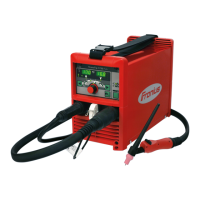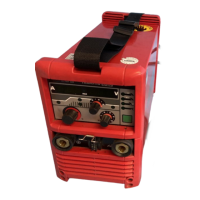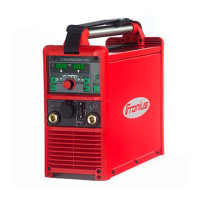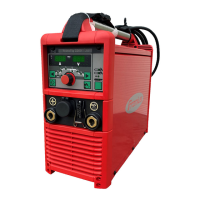36
Visual inspection
General During a visual inspection, the tests described below are to be carried out without further
dismantling of the equipment. Safety related parts must not show any visible defects. Fur-
thermore, defects which may present a hazard during the visual inspection must be written
down.
Deficiencies identified that may be the cause of other hazards must be repaired immedi-
ately, otherwise further use must be restricted until the defect is rectified.
General condi-
tions
- There must be no significant dust and contamination
- Gas lines and connections must not be faulty or defective
- Marks and labels (rating plates, warning stickers, grounding symbols, etc.) must be
present and legible
- Other damage or indications of improper use must not be present
Welding torch /
electrode holder /
welding current
return terminal
- Housing and insulation parts, and protective covers must not be missing or damaged
- Connections must not be defective
- Switches must not be damaged
- Other damage must not be present
Grid power sup-
ply and connec-
tion cables
- Connection cables and external leads must not be damaged or defective
- Insulation must not be defective (do not use insulation or adhesive tape to repair dam-
age)
- Plugs and plug connections must not be damaged or deformed
- Strain relief devices, bend radius protection devices, conduits and fixings must be ef-
fective
- Cables/plugs must be suitable for their area of application and power
- Fuse links and device fuse holders must not be defective
IMPORTANT!
To determine the cross-section and current carrying capacity of mains cables, ob-
serve the relevant standard.
As the current carrying capacity can vary due to the cable layout and its insulation and dif-
fering ambient temperatures, when the mains lead is replaced the requirements of the
standard must be met. Individual national requirements and standards must also be ob-
served.
Welding circuit - Lines must not be damaged or defective (do not use insulation or adhesive tape to re-
pair damage)
- Coupling/plug devices must not be deformed, damaged or thermally damaged
- Strain relief devices and bend radius protection devices must be effective
- Cables/plugs must be suitable for their area of application and power
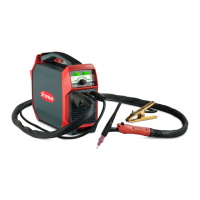
